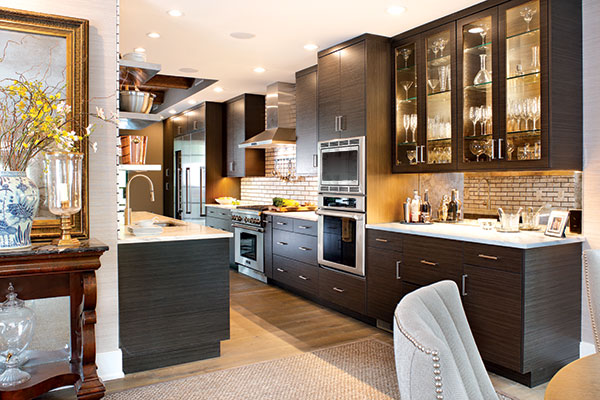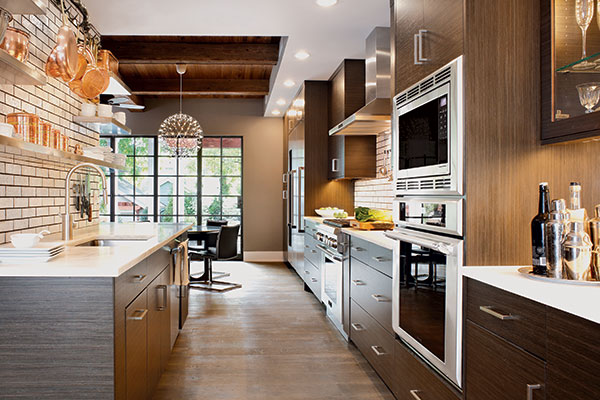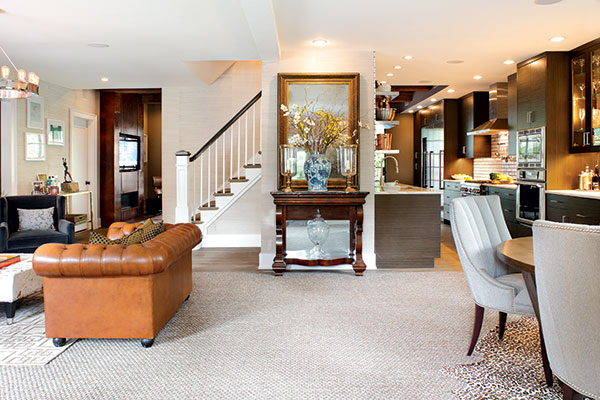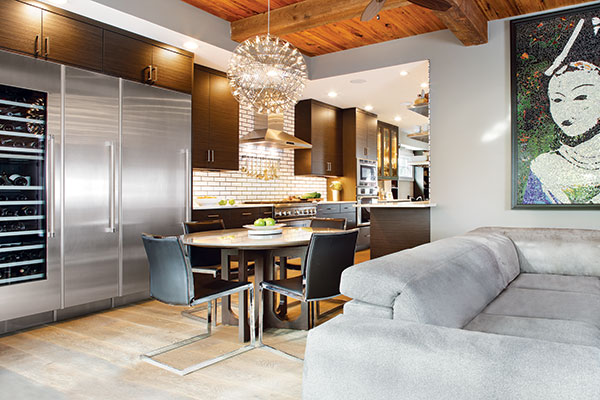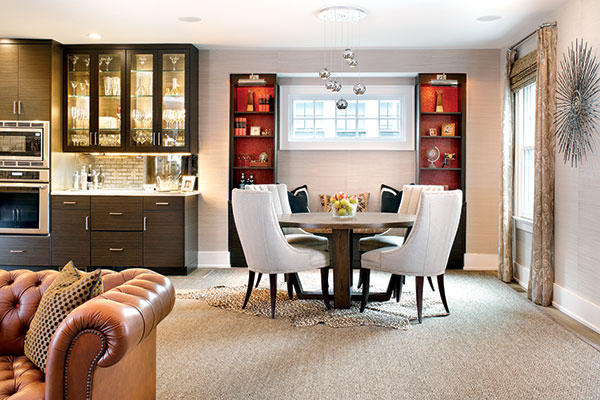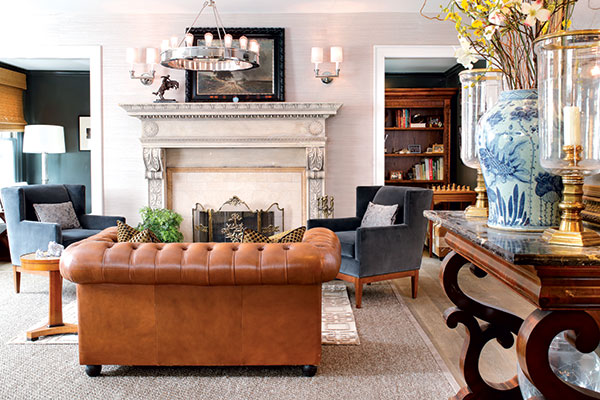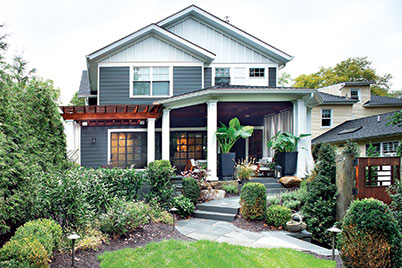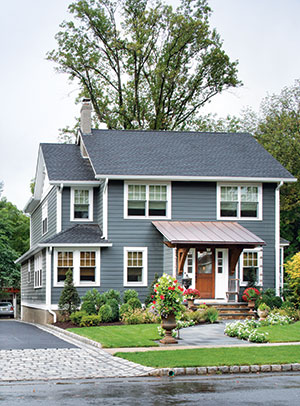Lofty Ambitions
Writer Marirose Krall | Photographer Peter Rymwid | Designer J.L. Design (Kitchen Designer) | Location Millburn, NJA suburban home acquires urban style when the walls come down.
Norman Spier has a passion for remodeling. “I’ve renovated 10 different houses,” says the owner of Spier Building & Design Consultants in Montclair. Spier, who prefers “going to architectural shows rather than Broadway shows,” brought his vast experience and a keen enthusiasm to his latest project.
Still, when he decided to move into a house he’d owned and rented out for the previous 15 years, he was faced with an extraordinarily complex venture. “I knew I’d have to do a gut renovation,” he says.
Far & Wide
The Millburn home bore the hallmarks of its 1935 origins. Joseph Rispo a registered architect and partner at J.L. Design in Millburn, the kitchen design firm that worked on the project, describes the old-school floor plan. “The rooms had traditional relationships. They were closed off from each other.”
Spier’s vision was quite different from that reality: “I wanted to have a loft-like feeling,” he says. Though he wanted an open floor plan, Rispo notes, Spier “wasn’t interested in an addition. We realized space was at a premium, and we cleared the slate.”
Rispo’s partner, Larry Fischer, explains what a “clear slate” looked like in this project. “We took out most of the walls, left the central spine and staircase, and worked around that.” “It developed into something like an urban space,” Rispo adds.
Sight lines run mostly unencumbered from room to room. Neutral wall and floor colors help to underscore the expansiveness of the newly opened space. The airy first floor did present some decorative challenges though. Rispo points out a major concern: “How do you define spaces that are useful with a totally open floor plan?”
The style had to be cohesive, yet had to lend itself to different interpretations in various rooms. Rispo says the solution was “using different ceiling treatments and different ways of lighting the space the way you would in an open apartment.”
In the living room, a substantial circular polished nickel chandelier presides over the sitting area, coordinating with—yet distinctly different from—the cluster of mini-pendant lights over the dining room table. In the breakfast area, a light-filled globe floats over the table to striking effect, delineating the eating space.
Modern Materials
The light fixtures contribute to the home’s contemporary feel, as do sleek, shiny surfaces in the kitchen. That room was very important to Spier because he entertains often. The galley-type space, transformed from a small corner kitchen, is efficient and convenient. Its position, between the two dining areas, creates one long food-centric space on the right side of the house. “We made a cook’s kitchen in a space that didn’t really allow it,” Fischer says.
The kitchen is simplicity itself with linear, smooth planes, uncomplicated ornamentation, and a straightforward color scheme. White countertops and backsplash tile create a dramatic counterpoint to the dark cabinets. The floor is fabricated from wide-plank French-oiled oak in a gray tone. “The whole thing became very industrial looking,” Fischer adds.
Though the kitchen is slender (nine feet at its narrowest point) and the cabinets by Plain & Fancy Custom Cabinetry are dark, the room itself stays bright thanks to French doors along the back wall that allow outdoor light to permeate the space.
Traditional Touches
Spier added depth to the modern décor with pieces inspired by his extensive travels. “I was really trying to do something a little different by combining elements I’ve seen over the years.” For instance, open shelving in the kitchen is based on shelves Spier noticed in a home in Provence, France. Copper canisters on that shelf bring a dash of warm color to the room while reiterating the metallic theme.
Beamed wood ceilings—which Spier saw in new homes in Sag Harbor, New York—add a rustic note to the breakfast area and the family room. In the dining room, bookshelves matching the kitchen cabinets flank a window and create space for a traditional window seat.
Perhaps the most traditional space is the living room, where Spier found a home for a vintage stone fireplace mantel. “I waited years to use it,” he says. It was worth the wait; the elegantly carved mantel takes a prominent place in the room opposite a conversation area composed of a classic leather sofa and two wing chairs.
The room’s modern brushed-nickel light fixtures unify the traditional space with the modern feel of the rest of the first floor. In this home, the old and the new complement and improve on each other. It’s a concept that’s unfamiliar to some, but not to Spier. “A lot of people think that if you have modern things you can’t have traditional things with them. But that’s really not true,” he says. “The traditional pieces soften the modern components, and the modern elements invigorate the older look.”
Marirose Krall, a regular contributor to Design NJ, is a Red Bank-based writer.

